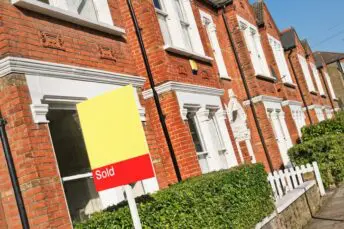House Price Index Feb 2025
Most of the indices report a strong start to market activity in 2025 with agreed sales 10-15% higher than a year ago. House price growth has been held in check with the looming stamp duty deadline and the number of homes for sale at a ten year high. Buyer demand has begun to fall -- possibly in response to a slower economic outlook and higher stamp duty costs from April. As a result, market activity and house price growth beyond April are expected to be restrained until mortgage rates begin to fall further.
What’s happening nationally
House prices were up on average +0.2% over the past month and+3.9% over the past year.
All of the indices reported fairly stable house prices over the past month: Halifax (-0.1%), Land Registry (+0.2%), Nationwide (+0.4%), and Rightmove (+0.5%). All of the indices recorded an increase in annual house price growth: Rightmove asking prices up +1.4%, Halifax up +2.9%, Nationwide up 3.9% and Land Registry reporting January figures up 4.9%.
Note that there has been a change of methodology in the calculation of the Land Registry house price index. From February 2025 reporting, January 2023 became the new reference period for inflation rates. Land Registry has been re-referenced because the types of property being sold can change over time.
Indices based on:
Land Registry – registered property transactions in January.
Nationwide & Halifax – mortgage valuations in February.
Rightmove – asking prices posted on Rightmove in February.
*Rightmove is not included in the index average as the basis for its index is different (asking price vs agreed sale price)
| Index reports: | Monthly change | Annual change |
|---|---|---|
| Land registry | +0.2% | +4.9% |
| Nationwide | +0.4% | +3.9% |
| Halifax | -0.1% | +2.9% |
| Rightmove | +0.5% | +1.4% |
| Average change | +0.2% | +3.9% |
House prices in your area
House prices were up +2.3% in London over the past month and up +1.5% in Northern Irealnd and +0.9% in Wales. Otherwise, house prices were relatively stable over the past month (with houses prices slightly up or slightly down across the country).
Over the last year, house prices have increased in all areas with the biggest rises in Northern Ireland (+9%), the North East (+9.1%), the North West (+6.8%), the East Midlands (+6.2%) and Wales +6%.
Average house prices remain highest in London (£564K) and lowest in the North East (£161K).
House prices increased in the last year for semi-detached (+6.0%), terraced (+5.9%), detached (+4.7%) properties and for flats/ maisonettes (2.3%).
| UK Region | Average price £ | Monthly change | Annual change |
|---|---|---|---|
| England | |||
| Nothern Ireland | |||
| Scotland | |||
| Wales | |||
| North West | |||
| Yorkshire and The Humber | |||
| North East | |||
| West Midlands | |||
| East Midlands | |||
| South West | |||
| East of England | |||
| South East | |||
| London |
| UK City | Average price | Annual change |
|---|---|---|
Market Monitor
In January 2025 there were 95K transactions, with little change (-0.1%) on December 2024 (96K) and up (+14%) versus January last year (when transactions of 83K were below the long run average). Agreed sales are reported to be up 10-15% versus last year.
The level of new buyer enquiries fell in February, while new listings for sales were up again this month. Zoopla says the number of homes for sale is up 11% on last year and Rightmove reports that the number of homes for sale is at a 10 year high.
The average time to secure a buyer has improved to 68 days in February according to Rightmove, down from 77 days in January.
How busy is the market?
- Not busy
- Normal
- Very busy
- Transactions steady in January
- Total transactions in January 2025 95K
- -0.1% versus last month
- +14% from Jan last year
Homes for sale vs homebuyers
- Good availability of homes
- Normal
- Shortage of homes
- Buyer enquiries down(-14% RICS Jan data)
- Seller instructions up (+12% RICS Jan data)
- Average stock per agent 57 in Feb; up from 56 last month (incl under offer/ Sold STC Rightmove)
Average speed of sale
- Fast
- Normal
- Slow
- Feb figure: 57 days to find a buyer down from 77 days last month but above the 12 month average of 64 days (Rightmove)
What the experts say
Rightmove

“The average price of property rises by 0.5% this month, a muted price rise for this time of year as new sellers lower price expectations, due to the looming stamp duty deadline and high competition with the number of available homes for sale at a 10-year high. The stamp duty deadline will impact some regions and movers more than others, with a conveyancing log-jam expected. There are more than 550,000 homes sold awaiting legal completion, 25% more than at this time last year. First-time buyer purchases between £500,001 and £625,000 are most affected, with an extra £11,250 at risk for this group if the deadline is missed. Moving activity remains robust after the first full month of 2025 compared to a year ago, with the number of new sellers coming to market now 13% ahead, buyer demand 8% ahead, and sales agreed numbers up by 15%.”
Nationwide

“The price of a typical UK home rose by 3.9% year on year in February. House prices increased by 0.4% month on month – the sixth consecutive monthly gain. Housing market activity has also remained resilient in recent months, despite ongoing affordability challenges. Indeed, the second half of 2024 saw a noticeable pick up in total housing transactions, which were up 14% compared with the same period in 2023. However, taking 2024 as a whole, transactions were still modestly (6%) lower than the levels prevailing before the pandemic struck in 2019. Looking ahead, the changes to stamp duty at the start of April are likely to generate volatility in transactions in the near term, as buyers bring forward their purchases to avoid the additional tax. This will likely lead to a jump in transactions in March, and a corresponding period of weakness in the following months, as occurred in the wake of previous stamp duty changes.”
Zoopla (Hometrack)

“The sales market continues to register positive momentum, with the number of sales agreed 10% higher, and 11% more homes for sale than a year ago. House price inflation stalled or slowed across most regions and countries of the UK in January. This reflects the sharp dip in consumer confidence in the wake of the Autumn 2024 Budget, and mortgage rates increasing by 0.5% since September 2024. The moderation in house price inflation may also reflect buyers starting to factor in higher stamp duty from April 2025. Half of homeowners will have to pay an extra £2,500 per purchase. One notable trend emerging during the early weeks of 2025 is a double-digit increase (14%) in the number of flats on the market, with a more modest increase (5%) in the number of houses for sale.”
Halifax

“February’s figures highlight the delicate balance within the UK housing market. While there’s been talk of a last minute rush on new mortgages ahead of the changes to stamp duty, inevitably we’ve seen some of the demand that was brought forward start to fade as the April deadline ticks closer, given the time needed to complete a purchase.”
RICS

“The February 2025 RICS UK Residential Survey results are indicative of a modest slowdown across the sales market, with concerns over interest rates, inflation, and global events appearing to dampen buyer confidence somewhat. Moreover, the impending stamp duty deadline on the 1st of April is likely distorting the underlying demand picture at present, as well as contributing to uncertainty around the outlook for activity in the months ahead.”




